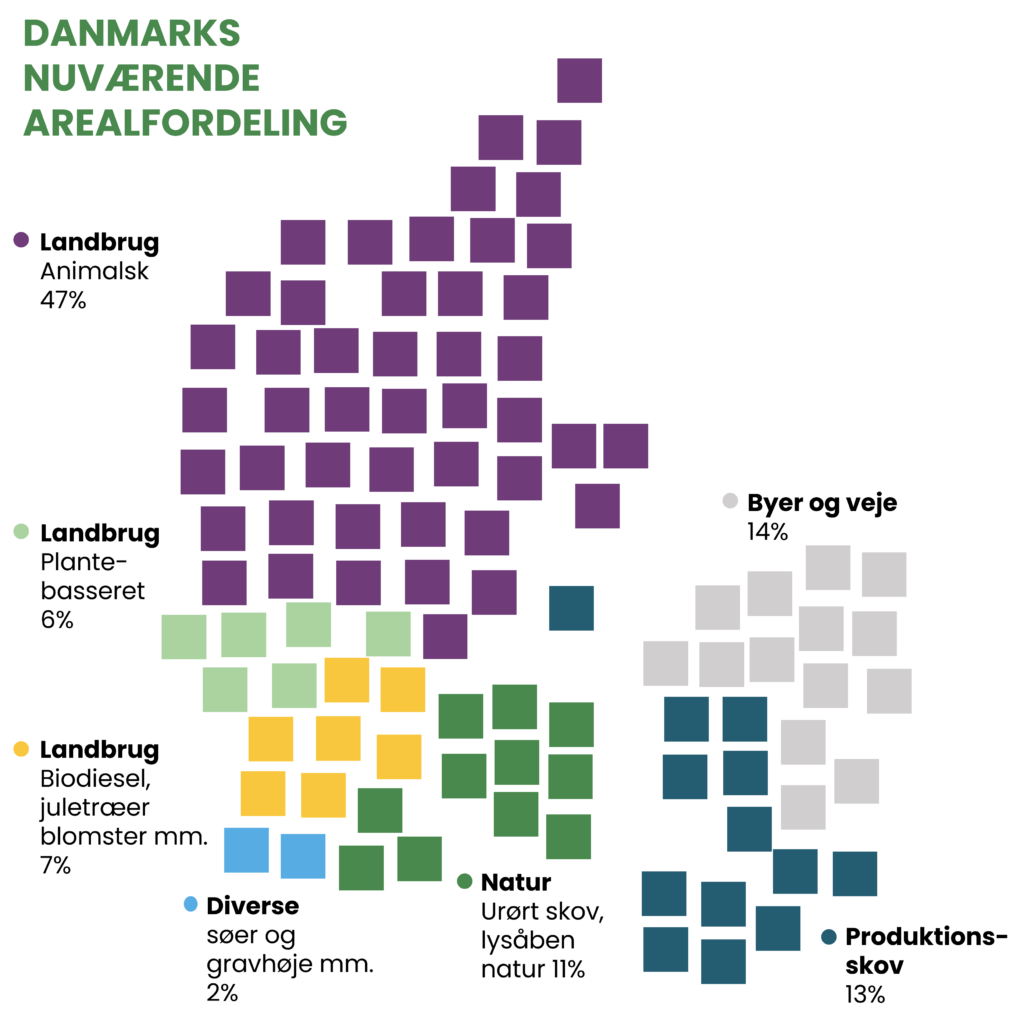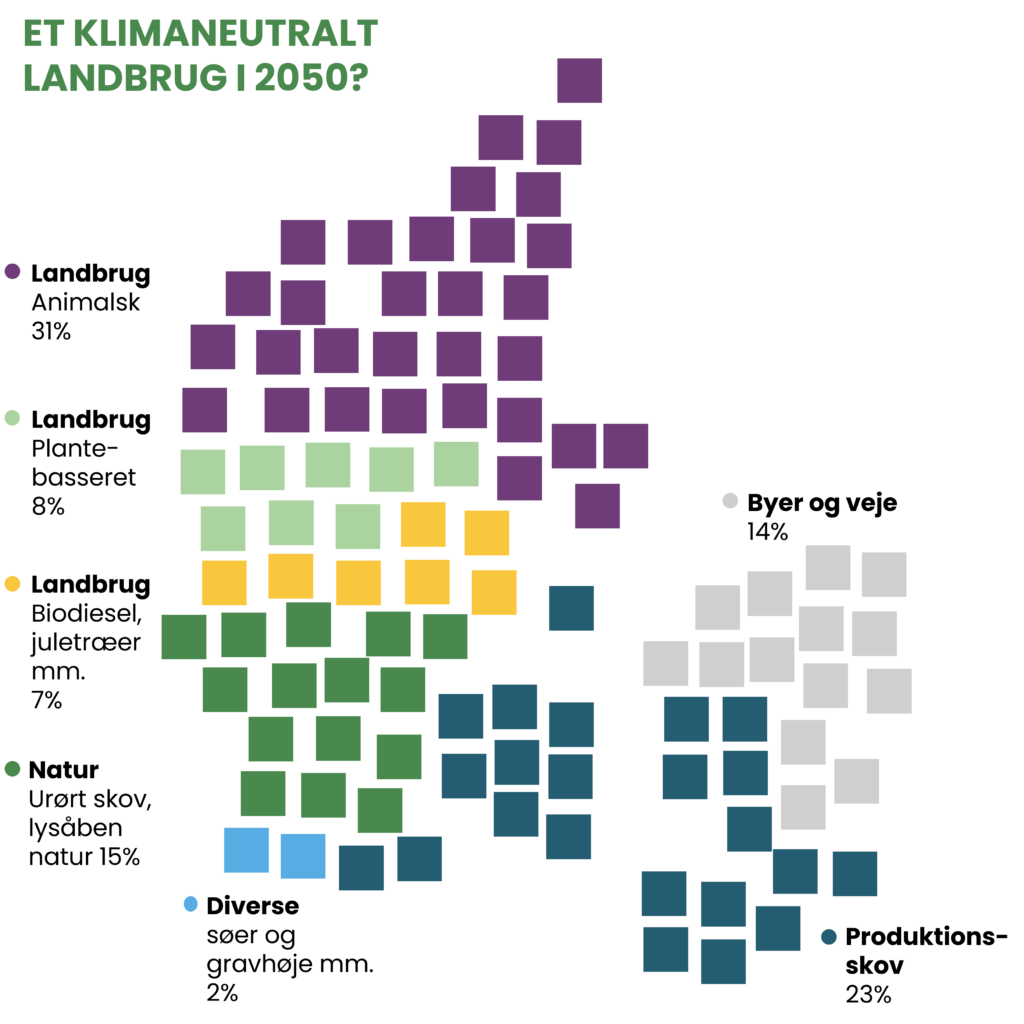The Danish agricultural sector is facing the green transition and many ideas have been proposed to reach climate-neutral agriculture in Denmark by 2050. In this brief, we suggest two pathways to climate neutrality to follow the general goals of a 70% reduction in 2030 and a 100% reduction in 2050.
70% greenhouse gas reduction by 2030
100% greenhouse gas neutral by 2050
No animal feed import by 2050
Technology-optimistic or technology-independent
The first scenario is a technology-optimistic scenario, while the second scenario to a larger extent can reach the goals without technological development. In both scenarios, a large increase in the forest areas is necessary such that the forest area in 2050 is approximately double the area of today.
In the technology-optimistic scenario, the amount of farm animals can be kept at the same level as today because the biogas and pyrolysis plants can reduce part of the emissions and the forests compensate for the rest of the emissions. In the technology-independent scenario, it is necessary to reduce the amount of farm animals to reach the climate targets.


Key figures

FOREST
1.000.000 ha, roughly 23% of the Danish land mass, must be covered in forest by 2050.
The forestation should happen sooner rather than later so 160.000 – 200.000 ha should be converted into forest already by 2030.

LOW LAND AREAS
100.000 ha of carbon-rich lowland soil should be converted into natural areas by 2030.
All 178.700 ha low land soil must be converted into nature by 2050.

ANIMALS
In a technology-optimistic scenario, with a sharp increase in forest area, animal production can remain the same size as today.
In a technology-independent scenario a 15% reduction in animal production by 2030, and a 30% reduction in 2050 relative to today is necessary.
If the steep forest area does not happen, a further reduction in animal production is necessary.
Read the full analysis
The model is open-sourced
Make scenarios yourself. Download the full model used for the brief from our GitHub repository.
Duration: 2021
EML-Team: Kenneth Karlsson and Ida Græsted

